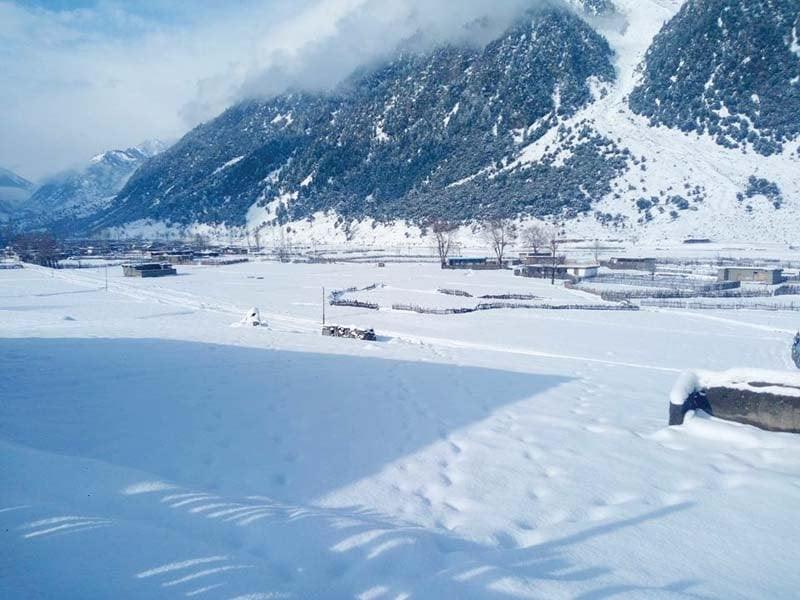Kalam:
Asim Ali, a 55-year-old resident of Oshu Village in Upper Kalam, so helpless as water stepped into his stone house as a result of the rising river Swat.
The recent flood triggered by the accelerated melting of glaciers combined with heavy rainfall forced many villagers to quickly place sand bags around their homes in an attempt to curb the gushing water and rescue bodies.
“The water flow in the river SWAT has risen every summer due to the rapid melting of glaciers and erratic rainfall,” Asim said.
Transport of stones on donkeys from nearby mountains, Asim and his family are trying to restore their damaged home.
He remembered a time when glaciers were much closer to the village. “Our streams used to flow steadily. Now they either dry up or flood unpredictably,” he said.
He accused illegal construction, glaciers that melt, intervention and deforestation for reinforcing the speed and destructive force of the river.
For generations, villagers such as ASIM have mostly been dependent on glaciers fed irrigation to grow crops such as wheat, barley, peaches and apricots. But changing water patterns have made agriculture more and more uncertain.
“We are now dependent on rain that is rarely sufficient. Sometimes we lose whole crops to drought or sudden floods,” he complained.
SWAT’s glaciers are crucial to the Indus River System and its side elves that supply clean water to millions and maintain the region’s fragile ecosystem.
However, their rapid retreat due to global warming poses a serious threat.
“As temperatures rise, glaciers go back at an alarming speed and trigger ecological, social and financial consequences,” said environmental expert Dr. Shafiqur Rehman.
Pakistan hosts over 7,253 glaciers than anywhere outside the polar regions. Remarkable among them is Baltoro (63 km), Biafo (67 km) and Batura (57 km) in Gilgit-Baltistan, as well as nearly 500 glaciers in Upper Chitral’s Tirich Mir range, feeding large rivers such as Swat, Panjkora, Kabul and Indus.
“Our irrigation systems depend strongly on these glaciers,” Dr. Rehman and added with rapid population growth and shrinking glaciers, Pakistan faces an impending water crisis and by extension of food security.
With reference to the intergovernmental panel of climate change (IPCC), he noted that the Himalayan region is warming faster than the global average. Some glaciers lose up to five meters in thickness every year. As glaciers act as natural reservoirs, storage of water and releases it gradually, their accelerated melting interferes with this balance.



